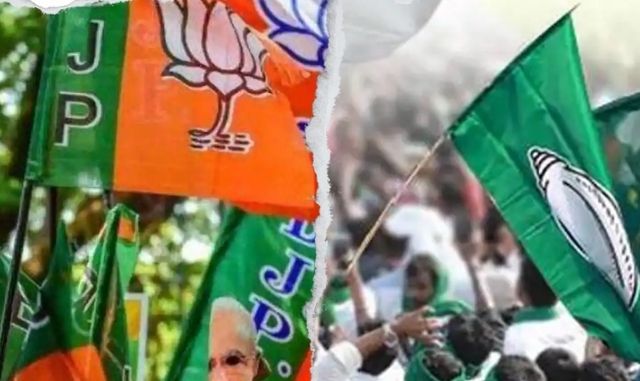Elections 2024: Who’s Winning In Odisha? It’s Anybody’s Guess

It’s election time, and time to be hounded by that obnoxious question: who is winning in Odisha, the BJD or the BJP? It comes with all seriousness, from everywhere. As if lives depended on the answer.
“Consult an astrologer man,” One is tempted to reply, “I am not in the business of predictions.” But the response has to be held back. A journalist, even a has-been journalist like this writer, is supposed to have predictive powers. That is a myth assiduously created and made larger-than-life by the brotherhood and sorority of mediapersons. Watch the pundits among the ilk straining every sinew of their mouths on television to make a prophetic point or read political columnists foretelling election results, the point becomes clear. They are living up to the myth. People, at least their audience, trust them. Why disappoint them?
“The BJP would perform well and improve its 2019 tally, but the BJD would retain its dominance.” One opts for the safe answer and immediately notices the wrinkles of dissatisfaction on the face of the person. Clever journalists tailor their reply to suit the political inclination of the asker. People, after all, are looking for a response aligned with their set biases, not in-depth knowledge. A BJP supporter, for example, would like to hear nice things about his party. The same goes for the BJD sympathiser.
Is it really possible to make an accurate forecast of election results? The answer is in the negative if we go by experience. There are just too many variables, too many unquantifiables and too many eccentricities involved in the process. This is particularly true when the two major rivals are not too far apart in terms of vote share as the BJP and the BJD are, or there are other parties with dedicated support bases in the mix or there are a good number of influential independents, or all of these together. Also, a large number of electors tend to make a voting decision very late. It can nullify any prediction.
Anti-incumbency – the disaffection earned and accumulated by a government during its tenure – leads to the ouster of governments. Experts, particularly those backing the BJP, would claim that the BJD faces serious anti-incumbency. It would make swing voters gravitate towards the saffron party. Now, all parties in power gather some anti-incumbency points. The BJD has been winning despite being more than two decades in power. It’s obvious that in the earlier elections the dislike of the government had not reached the critical point beyond which change becomes imperative. Has it reached this time?
No way one can be sure. It’s also possible that the government has accumulated enough positive points through Mission Shakti, initiatives at promotion of sports and several pro-people moves to offset the negatives. And the leader Naveen Patnaik, the singular biggest vote catcher for the party, remains personally blemishless. Is there a way to compare the sum of negatives with the sum of positives? No.
Similarly, the BJP registered a massive leap in vote share in the general and assembly elections of 2019. It has been busy consolidating and expanding it ever since. The twin factors, the party’s mascot Prime Prime Minister Narendra Modi and organisational work at the grassroots, have made it a credible challenger to the BJD. But do we know for sure how much ground it has covered so far in the coastal region, or how its candidates measure up against the BJD’s, or how the impact of the inauguration of Ram Mandir in Ayodhya compares with the impact of the latter’s temple development spree? No.
Elections are decided not by core votes – voters who would support their party come what may – but the floaters. The latter are always bigger in number and are prone to mood shifts. Studies of voter behaviour reveal that a significant number of people come to a decision late in the campaign stage, sometimes as late as while pressing the button. That is one reason why results of opinion polls and exit polls often vary. Opinion polls also throw up different results during different phases of the campaign. Also, the Indian voter is difficult to read. No two people, even spouses, are expected to respond to the same stimuli – sops, speeches, campaign promises, performance etc – the similar way. Community vote blocks matter, but in Odisha unlike in the North of the country they are virtually non-existent.
So, how easy is it to make predictions? Only a fool or an inveterate party loyalist would be confident. Broad trends are perceptible at the national level, and it creates scope for some extrapolation, not so the case of Odisha. Voting patterns here don’t conform to the caste, class or religion calculus other parts of India are familiar with.
Now, coming back to the question we began with, who’s winning in Odisha, the BJP or the BJD? Don’t trust the oracles on television or other media, they are as good as the man on the street. It’s anybody’s guess. Self-serving myths can wait.
(By arrangement with Perspective Bytes)

Comments are closed.